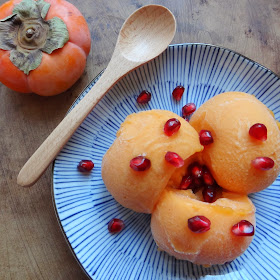 I seriously cannot believe it's New Year's Eve. Can I please go back to being a kid again?
I seriously cannot believe it's New Year's Eve. Can I please go back to being a kid again?Maybe I'm not cut out for the world of food blogging, alongside the multitude of smiling happy women writing their upbeat prose; prose that makes you want to whip out an apron and spatula just to capture some of that bliss, some of that contentment with life that seems to emanate from their words.
I can't do it.
On a good day, I'm endearingly neurotic, making godzilla-worthy messes out of my kitchen, introspective and analytical to a fault. On other days, I'm fickle, wrathful, and dangerously unstable, capable of destroying people in a single spiteful sentence.
I am human, I am imperfect, I am flawed.
Right now, I'm Alice, falling down the rabbit hole. When did the years start to fly by so fast?
There's so much left undone.
 I guess, given my mood, that it's ironic that some translate "Toshikoshi" as meaning "killing off the year."
I guess, given my mood, that it's ironic that some translate "Toshikoshi" as meaning "killing off the year."Toshikoshi soba is traditionally eaten on New Year's Eve in Japanese culture as a way of ending the old year and beginning the new year. The long noodles are a prayer for longevity, and traditionally soba is used because it is easier to bite through cleanly than udon, representing a clean cut leaving behind the bad of the last year and going fresh into the new year.







